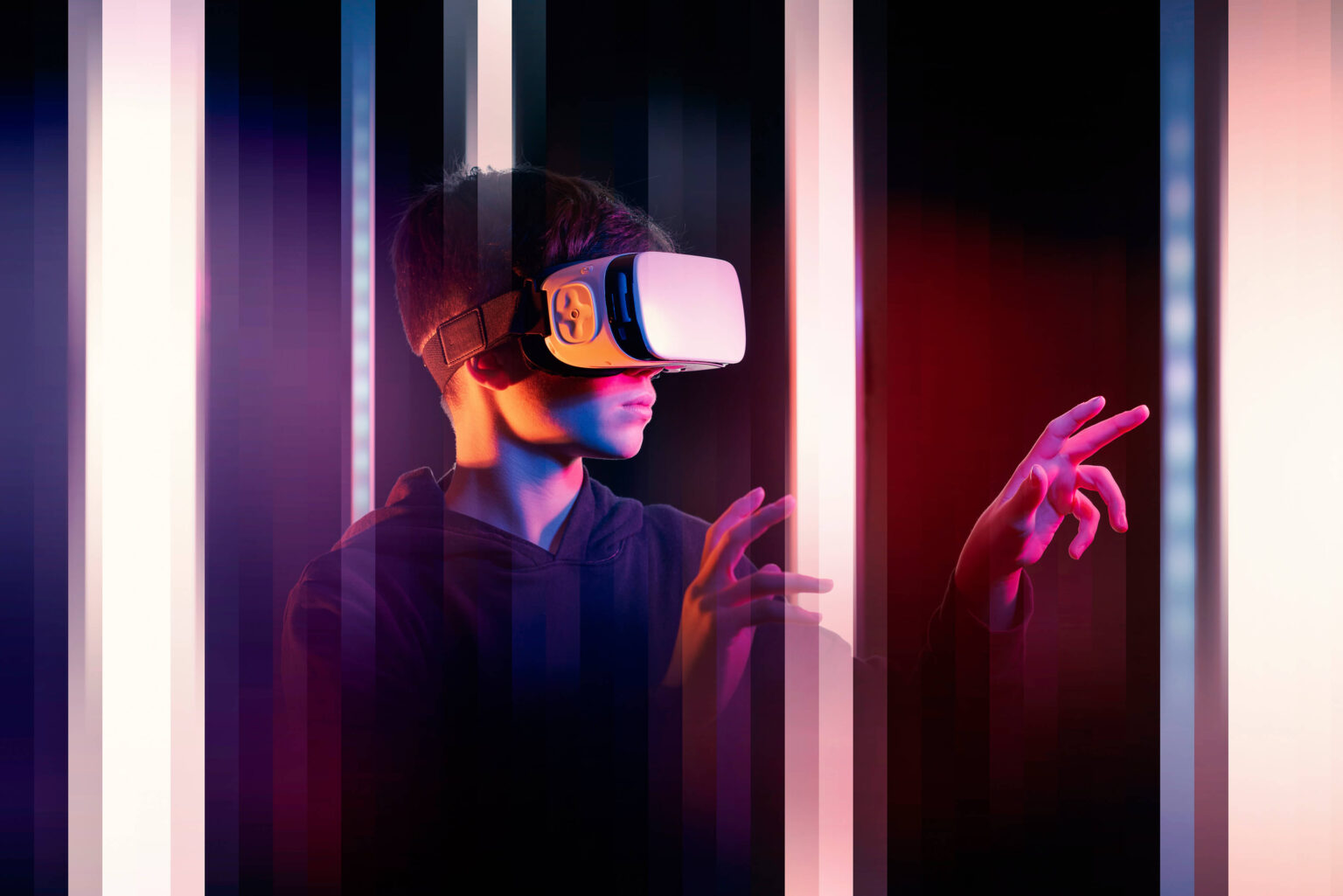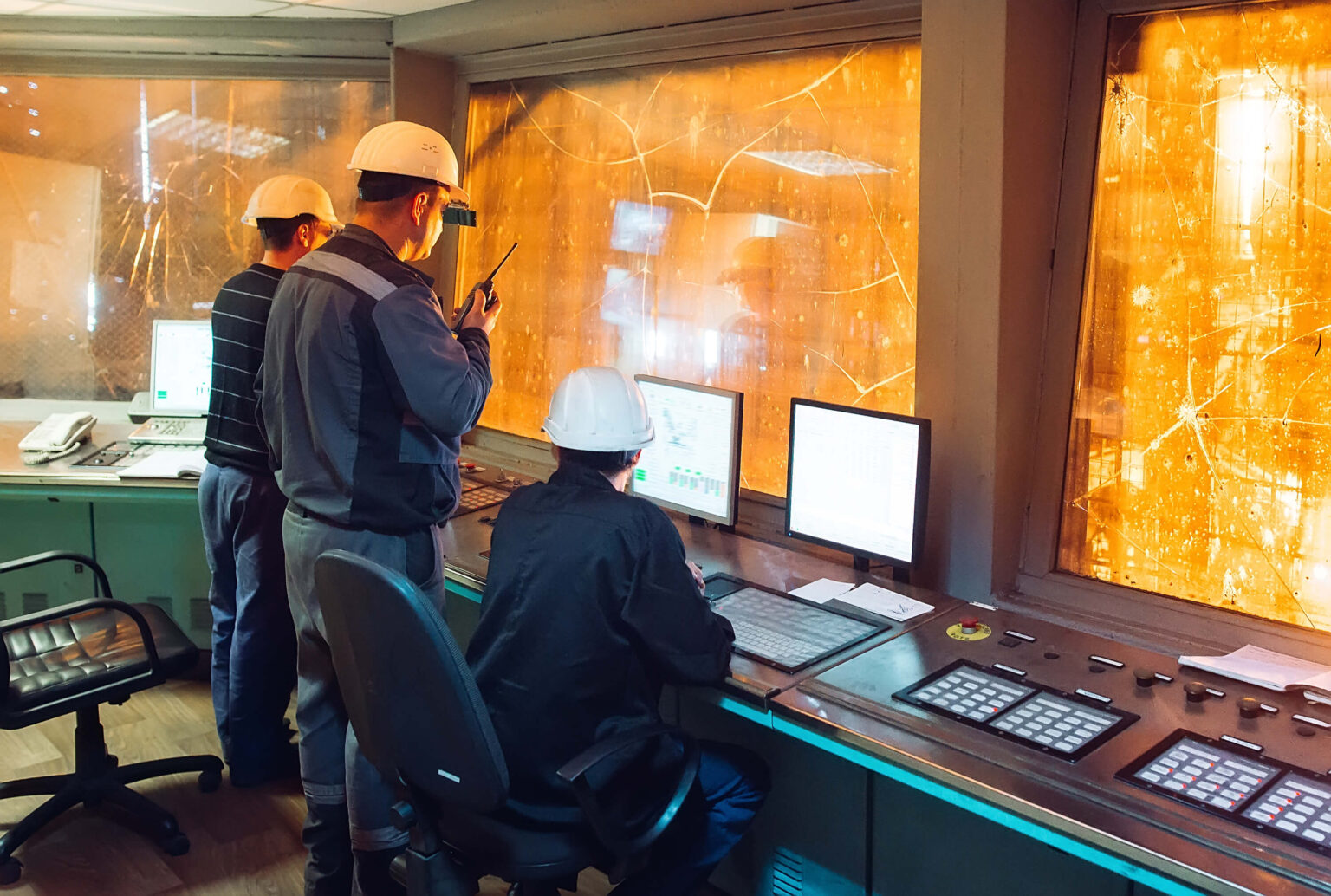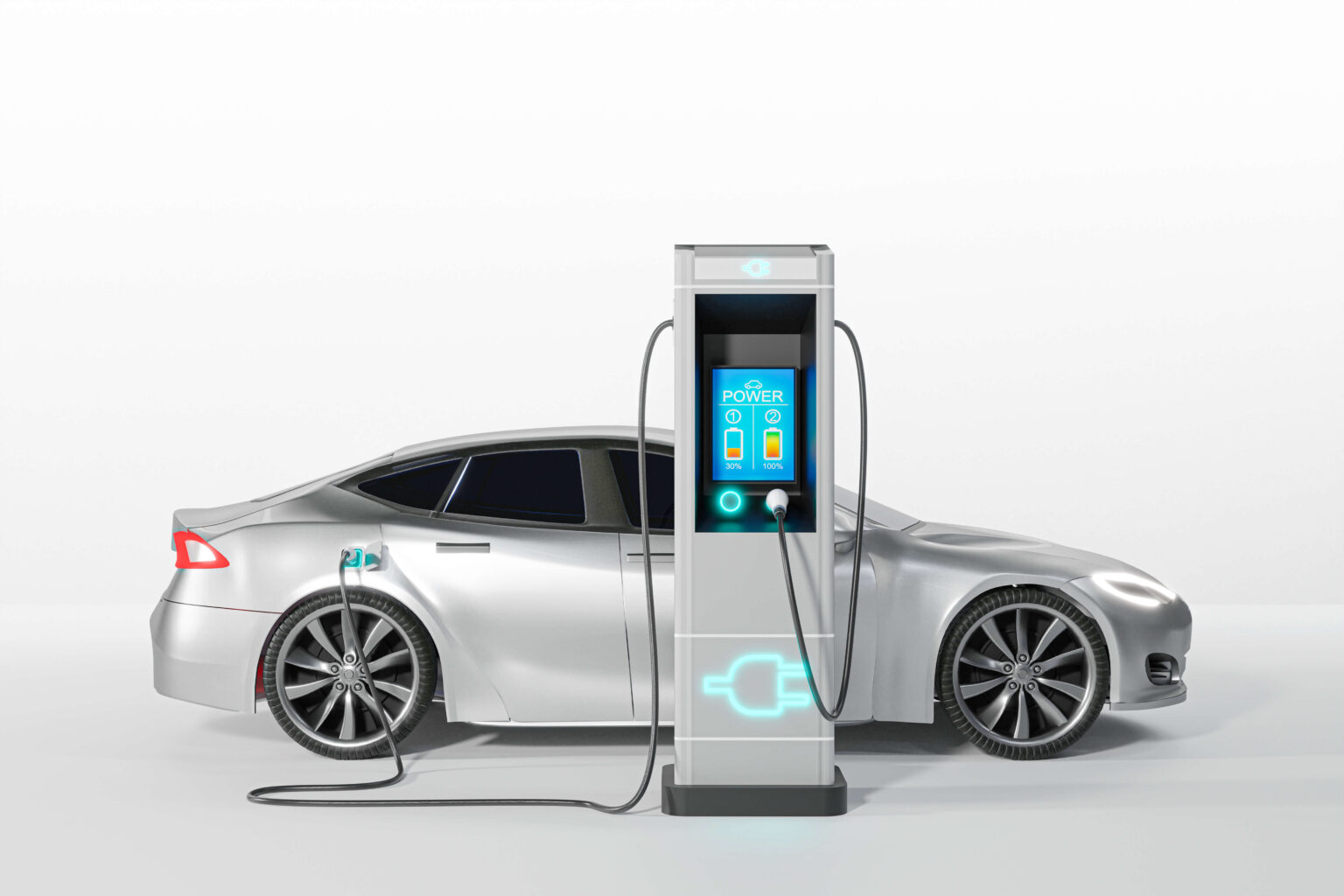If a person from the ancient past time-traveled to the world today, they would be in a tizzy in mere minutes – so much has changed. A tiny little device in our hands brings us more information than 10,000 newspapers; swanky cars that run on petrol and electricity; clothes, appliances, and even bread bought online and delivered to our homes; and humanity as a whole emerging from a pandemic that brought us to our knees. Yet this period of despair brought with it sobering lessons, a searing realization about our fragility, and finally, what binds us together as humans had never been more clearer than ever before.
We’ve lived the present, but what about the future? Some say predicting the future is a fools’ errand, but as a species that makes things happen, we certainly can do our best that the future holds glad tidings for each of us.
Walk with us through seven events that were make-or-break for humanity and how we can reflect on them to ascertain the further course of humankind.

Everything has upgraded, and miraculously, so has money. Globally, we have witnessed financial frauds of truly audacious scale and nature, leading to the common man questioning the security of money and the accountability from governments and global banks. Finding none, cryptocurrency was the natural direction in which people veered.
Formerly considered an alternative investment, crypto has reached the level of public acceptance in roughly the same league as stocks and mutual funds, with many even considering making it their retirement fund.
While still considered too speculative by some, others have bought into its vast potential, enjoying the benefits of early adoption. Since its inception in 2008, it has become a part of the regular parlance, getting over the public’s ‘fear factor’ towards a new and risky financial venture and thus cementing its place in the financial systems of the world.
As per an asset management analysis by J.P. Morgan, cryptocurrency seems to have garnered strong favor because “it enables decentralized, peer-to-peer transactions without a trusted third party while addressing the risk of the same asset being spent twice.”

Borderless Currency
While some nations are still wary, others are actively exploring cryptocurrency’s potential for borderless, cash-free, traceable, secure payments. El Salvador became the first nation to accept it as legal tender.
Although most countries seem to be actively fighting the rise of Bitcoin and other cryptocurrencies, that doesn’t take away from their interest in the concept. Perhaps, they are looking to launch stable crypto coins of their own, if China’s digital yuan is any indication. With the economic power of this league showing interest, other countries might be much more amenable to eventually embracing this digital currency.
On a smaller scale, more brokers are offering crypto trading, which has made it easier for people to start trading, exploring, and join the bandwagon.
Today, out of 7.9 billion people in the world, 106 million use cryptocurrency. Whilst that is a significant amount, there is still a large percentage that is oblivious to cryptocurrency, and the future years will bring more people into the fold if crypto becomes more accepted and moves out of ‘internet chatter’ and into common, everyday use.
According to list of The Richest Crypto And Blockchain Billionaires In The World 2022, 19 billionaires have become wealthy through cryptocurrency, although
this wealth generation goes beyond mere investment, for these individuals are leading the pack with blockchain technology.
Crypto has already made inroads, with companies like Microsoft, Wikipedia, AT&T, Intuit, and Shopify accepting Bitcoin for their services
There is a bevy of coins out there, with over 18,000 cryptocurrencies in existence as of March 2022. Of these, the most popular and reliable cryptocurrencies are – Bitcoin, Ethereum (ETH), Litecoin, Bitcoin Cash, and US Dollar Coin.
As per Investopedia, if we combine Bitcoin with Litecoin, Monero, Ethereum, and all other significant cryptocurrencies, the total value comes to roughly $2.48 trillion. To compare, an attempted calculation of the total amount of money in the world indicates that we have around $35.2 trillion in global narrow money.
Crypto entrepreneur Carl Runefelt finds most altcoins (those other than Bitcoin) much more speculative than Bitcoin and admits that perhaps only a few dozen have any true value for the world currently.
Obviously, money is for more than just investments; its real value is in day-to-day transactions. Crypto has already made inroads, with companies like Microsoft, Wikipedia, AT&T, Intuit, and Shopify accepting Bitcoin for their services.
Virgin Galactic is indeed living in the future, for they do sell tickets for Bitcoin, but only the ones for space tourism! In auto, at least one Lamborghini dealer in the US claims to accept crypto as payment. Elon Musk has said that Tesla will resume accepting Bitcoin as payment for their cars after ascertaining how much renewable energy is being used in mining bitcoin.
Apart from the big leagues, even outlets like Burger King, Pizza Hut, KFC, and Subway in some countries are accepting Bitcoin. This is a good indication that if the currencies can prove stability that regular currency carries for an extended period of time, we can see a future when your groceries, too, might be paid for in Bitcoin.
In the short term, most predictions point towards a settling of chaos and some regulatory relaxations. Meme coins will disappear, USD Coin will climb in stability, and the first spot Bitcoin exchange-traded fund (ETF) will likely be approved in the USA this year. Some analysts predict that Bitcoin could touch $100,000 by the end of 2023, but as with all things money, it’s time to wait and watch.

The vast marketplace where people strolled for goods and luxuries alike has moved online, and it’s bigger than ever before. Ever since e-commerce as a modality became available in the 1990s, consumables have changed, supply chain has strengthened, and even the remotest cities of the world are now on the e-commerce network, buying and selling at pace with the world.
With the pandemic and restrictions on movement, the world was forced to execute a dry run where we experimented with having only online commerce. This showed us that if a highly connected delivery mechanism is available, e-commerce can fulfill even the daily shopping needs of an ordinary citizen.
The definition of online shopping has now expanded to include direct-to-consumer (DTC) companies, small businesses with either a local network and some even ambitious enough to offer worldwide shipping, medical essentials being sold online, customized products to suit both your taste and your needs, and superfast deliveries that have customers truly spoilt with sheer convenience.
Already, brands that did not invest in an online presence suffered severe loss of sales during the pandemic. After an adjustment period, the ones that have managed to survive have crossed the hurdle and are seeing the benefits in terms of sales.
Online stores are popping up daily, with an estimated 12–24 million e-commerce sites across the globe. However, with more brands competing for customers, digital advertising is more costly and less lucrative than ever before.
The aforementioned direct-to-consumer (DTC) companies sell products directly to end-users through their own e-commerce sites, or through social media shopping, instead of an aggregator site. Instead of investing in traditional retail processes, they capitalize on online communities to humanize their brands, increase customer retention, and overcome skyrocketing advertising costs. As a result, these businesses are set to increase in the future.

The New Shopping Experience
Advertising will continue to evolve in increasingly non-traditional ways, leveraging audio visual content on blogs and utilizing influencers (even AI influencers) and memes. Everything with a potential for virality will be pulled in and tested for its advertising potential. In fact, it is no surprise that already, digital marketer and social media marketer positions are so sought-after.
E-commerce websites will try to compensate for the lack of human interaction with the online experience by making their sites more customized, more customer-oriented, and personalized to the T. Think the ‘recommended for you’ section but far more fine-tuned to you.
Some delivery sites are also experimenting with drones, programmed with the flight trajectories, to replace delivery persons in reaching orders to customers. While they may be better for lighter goods, they are certainly faster than humans and will help in connectivity to unreachable areas or during bad weather conditions. We may reach a day when drones make 1-day shipping look tardy. Now that’s something.
Voice searches for all your shopping needs will become more common – In fact, statistics predicted that 50% of all online searches will be voice-based by 2030, meaning that search keywords will have to evolve accordingly.
Sustainable e-commerce will also become a priority with more environmentally friendly packaging and efficient supply chains.
with more brands competing for customers, digital advertising is more costly and less lucrative than ever before
All of these changes and advancements mean that the workforce of warehouse workers, delivery workers, and other blue-collar positions might increase in number – but there is also a chance that AI and automation might push what are called ‘unskilled’ workers out of business. Companies and policymakers will have to work together to ensure that these workers are not left out in the cold as the world hops on to better technology and faster speeds.
Already, data is playing a significant role in e-commerce and marketing strategies. Well, be ready to have that become even bigger. As spending across channels becomes complicated, businesses will seek to become more frugal, thus relying on accurate attribution models to direct their spending and decision-making.
Even with all the evolution, one thing stays constant – the customer is king. Establishing trust with customers will be ever important, especially as competition heats up. Customer centricity is likely to soar even higher.
The e-commerce industry is expected to grow by almost $11 trillion between 2021 and 2025. By the year 2023, it’s estimated that e-commerce purchases will rise from 14.1% to 22%. These numbers strongly indicate that while so much innovation has already taken place, e-commerce as a business is yet to reach its potential.
Statistics indicate that by 2040, e-commerce will make up almost 95% of all purchases. If you’ve got a big-selling idea, there is no time like the present to find your customer.

As we speak, the next version of the internet is churning. While we currently experience Web 2.0 in all its glory, we are on the cusp of Web 3.0, a decentralized internet that will be open, transparent, more secure than the existing one, and unmonopolized by the tech powers.
Every iteration of an existing technology promises to eliminate some issues, and Web 3.0 is no different. It will be one of the major innovations of the decentralized future, hand-in-hand with cryptocurrency and NFTs, combining machine learning, AI, and blockchain to enable real-time human communication.
What does a Web 3.0-based internet look like? With Web 3.0, information could be stored in multiple locations simultaneously, making the massive databases obsolete, which are currently held by internet giants like Meta and Google, thus offering greater control to end-users. The goal is to ensure ownership with the original creator.
Being open-source, Web 3.0 will also be trustless, with participants interacting directly with each other and platforms without a middle party, and permissionless, with no authorization needed from a governing body for any user. Given that it will be based on machine learning, its accuracy will improve thanks to the learning models employed as people use it more and more.
The USP of blockchain is that ownership is recorded on a shared, public ledger, thus letting you hold onto your digital assets as you move between platforms. This will also cause a massive change in the way we use social media and our virtual identities. In the future, each user may have one username for all their profiles on Twitter, Instagram, and TikTok (and whatever other social media comes up), and this single identity stores your data. Instead of these platforms owning and using your data, web 3.0 allows you to own your digital identity online, and you can switch services with the click of a button without losing years of data.

Making Virtual Real
We are looking at a possible future of reduced censorship and more press and individual freedom online. There will be fewer instances of social media platforms putting a stop to certain firebrands, for example. There will also be fewer companies monopolizing the app store market (say, Apple and Google), allowing developers to develop and publish apps without restrictions.
But right now, Web 3.0 still has a few hiccups. For one, a lot of it is still in a stage of conjecture, with many psyched about its potential but still grappling with the execution. For another, and perhaps related to the previous point, whatever has emerged of Web 3.0 is nowhere near intuitive or user-friendly the way we are used to with our existing applications. Even MetaMask, the world’s most popular Web 3.0 digital wallet, could use some work on its user interface. Adding a network like Binance Smart Chain to MetaMask, for example, should be as simple as clicking a button, but it currently requires manual entry of URLs and numerical codes. In many ways, it is a primitive form of Web 3.0, which means that both users and creators have a long way to go before it becomes the norm.
According to Emergen Research, the global Web 3.0 market size reached USD 3.2B in 2021 and may register a CAGR of 43.7% during the forecast period. Revenue is projected to increase to USD 81.5 Billion in 2030.
In the future, each user may have one username for all their profiles on Twitter, Instagram and this single identity stores your data
The other development that has people excited and perplexed in equal measures is the Metaverse, championed primarily by Meta, tech heavyweights like Epic Games, Microsoft, Niantic, Decentraland, and Apple, amongst others. While the possibilities are endless, in a nutshell, Metaverse will create a virtual reality that will have endless choices than the physical reality we are living in now.
In the Metaverse, you will be able to travel anywhere, meet strangers, and even interact with them and the native environment. Not just in space but also in time. Studying the history of origin of nationhood? A virtual reality of 18th century France and Germany would let you not just study it but live the experience.
All realities will ascend to another level, where you could go to a zoo in the Metaverse and enter the enclosures, even adopt the persona of an animal, attend concerts on the other side of the world, run marathons even if you are differently-abled, ride roller coasters without moving an inch.
Of course, you’ll have to pay for travel or other services, which is where cryptocurrencies like Bitcoin come in. Social interactions like hanging out with your friends and online dating may actually take place online.
The Metaverse’s market value is estimated to be around 800 billion dollars by 2025.

All the tech in the world, all the decentralized coins, all the flying cars, and hyperloops are all for nothing without the continued existence of our terra, our mother Earth, in all its glory.
If the outcome of the COP26 Climate Summit is to be believed, we may already be too late. Thankfully, even if big tech corporations and crude oil honchos want to turn a blind eye to it, several other companies have heeded the wake-up call and are innovating and investing in the sustainable economy.
According to a BSR report, the three factors that govern how sustainable businesses operate in the future are –
- Climate change and our collective response to it or our disregard for it
- Technology and how it will make our life easier while helping the ecosystem, and finally,
- Structural economic change to ensure that when we look at humanity’s progress, it’s all of us and not just a privileged few.
Several established corporations and new startups are now focusing on sustainability initiatives. Walmart started with its initiative in 2017 to divert 78 percent of global waste from landfills and invest $25 million over five years on food safety projects in China. Cisco and Dimension Data have partnered to track poachers at a game reserve in South Africa, successfully reducing rhino poaching in southern Africa by 96%.

Apple is committed to the “Closed-Loop Supply Chain”, where their products are made using recycled or renewable materials only. To do so, they encourage customers to turn in their iPhones during upgrades, recycling materials, and disassembly sections in factories.
Most governments have taken a common pledge, but companies are setting individual targets to achieve sustainability. While it is admirable, one wonders if by not taking drastic measures and settling for soft targets, we will be unable to mitigate the disaster that is man-made global warming.
Currently, renewables made up 29 percent of electricity generation in 2020 globally, much of it from hydropower (16.8 percent). Unfortunately, the future looks a little bleak on this front because, according to the IEA’s Stated Policies Scenario, modern renewables will account for 18% of total final consumption by 2030. much below the 32% share needed in 2030 to achieve the Net Zero Emissions by 2050 Scenario.
Sustainable cities will be more pervasive due to climate change and a surge in population, given that the world population is expected to reach 9 billion by 2050, of which 70 percent of the people will live in cities. Tenets of smart technology, organic sourcing, and using natural resources will become the governing principles of life.
To execute this, architects will design ‘urban hubs’, buildings for all-in-one use: residences, workspaces, social hangouts, farming, etc., creating localized communities of necessities to maximize space and reduce the carbon footprint per person.

Electric vehicles (EVs) are perhaps the most well-known technological efforts to fight climate change
Sustainable technology
Envisioning a new world order built on terms of sustainability will not be possible without the introduction of a different kind of technology:
Green architecture will work to construct buildings to reduce energy consumption by utilizing existing natural light and adequate insulation, with the materials sourced from urban waste and landfills.
We’ve known about the potential of Nuclear energy for a while, but due to the disposability issues of radioactive waste, it has not been used to its fullest. Experts are eager to explore Thorium, which might be an expensive element to mine, but since it is more abundantly available, might allow us to use nuclear power more robustly.
Biomimicry is the invention of self-healing materials that can “heal” themselves when cut, torn, or cracked. Another exciting development is artificial photosynthesis, a technology that will use sunlight and carbon dioxide to produce energy, which scientists are trying to work out how to scale up. Finally, Vertical farming can solve food production issues due to its eco-friendliness by growing crops in vertical layers instead of horizontally, and there can now be farms that don’t need any soil input.
The world population is expected to reach 9 billion by 2050, of which 70 percent of the people will live in cities
A New Landscape
Electric vehicles (EVs) are perhaps the most well-known technological efforts to fight climate change. The challenge is that while greenhouse gas emissions directly come from EVs, they run on electricity that is mainly still produced from fossil fuels in many parts of the world.
Automotive executives think that more than half of car sales will be those of EVs by 2030, an aim that President Joe Biden too patronizes EV sales goal, according to a new survey by KPMG.
Eventually, we may witness a gradual change in our landscape – electric charging stations replacing petrol bunks, personnel trained in this to help citizens, and more renewable energy sources to power these charging stations.
The proof lies in the pudding and numbers don’t lie.
Some of the biggest companies including Unilever, General Electric, IKEA, Tesla, Chipotle, and Nike, are generating an annual revenue of a billion dollars or more from sustainable products or services.
And here’s the kicker, as per the 2018 New Climate Economy Report, humanity could save a lot of money through a global shift to sustainable development. – $26 trillion by 2030, to be exact.
A greener economy could also create 24 million new jobs globally by 2030, as per the International Labour Organization (ILO).

Back in the day, humanity’s needs were simple – food, shelter, and clothing. People, both the individual and the collective, were too exhausted trying to achieve basic needs to ever reach the peak of Maslow’s hierarchy of needs. Working on our innate esteem and the evasive goal of self-actualization was a far cry.
Well, times have changed for the better. More people are committed to holistic healing, recovering from trauma, attaining peak physical health as well as more robust mental and spiritual health than ever before.
According to latest research by the Global Wellness Institute, the wellness economy is currently valued at more than $4.5 trillion and is projected to reach $7.0 trillion in 2025.

Physical Health
Organic farming is gaining popularity. According to a survey by the Organic Trade Association, sales of organic food and other organic products in the United States will reach nearly $62 billion in 2020, up more than 12% from the previous year.
More people are also going vegan. The exact numbers are tough to estimate, but one survey suggests a 40% increase in 2020, bringing the total up to 1.5 million.
People are also looking at consciously-sourced meat, artificially made meat, and so on. These are for two reasons – to stop indulging in cruelty towards animals and to have a more holistic and wellness-endowed lifestyle where our choices do not harm others.
Apart from diet, fitness has never been more relevant. The physical economy market, now worth $828.2 billion globally, includes sports and active recreation, fitness, and mindful movement, as well as the adjoining markets of equipment, apparel, footwear, and technology. According to fitness industry reports, there are 174 million club members worldwide.
When it comes to body-image issues, we are looking at a conundrum. Nearly one in every two women reported being more concerned about their appearance during the pandemic lockdowns of recent years. More than half of adults in the United States, the United Kingdom, Australia, France, and Germany reported weight stigma.
Of 50,000 adults, 41% of men thought they were too heavy and were self-conscious about their weight. In the same number of women, 60% of women thought they were too heavy and were self-conscious about their weight.
These numbers reveal some deeply problematic views that people hold of their bodies. Thankfully, there is a greater discussion of body neutrality and accepting ourselves as we are than ever before. However, given social media and the hyperfocus on appearance, we will see higher instances of insecurity and even body dysmorphia than in previous decades.
An essential aspect of wellness, thus, also involves legislation and social movements and discourse about how we can preserve the self and self-image in a world that forces comparison on us to put us down. Like the UK took a ruling that all edited and photoshopped images in media should be clearly marked as such, we could see more such legislation in coming years to preserve the sense of self of teenagers and adults alike.

Mental Health
As of 2020, 21% of U.S. adults experienced mental illness (52.9 million people). This represents 1 in 5 adults. The numbers rose sharply during the pandemic, with people grappling with isolation, anxiety, depression, increasing work-related burnout, all compounded with a fear for our lives.
Mental wellness has become mainstream and will become more so in the future. Increasing in a big way are new “integrative” mental wellness approaches with hotels, wellness retreats, and spas bringing in psychotherapists and neuroscientists to assist in increasing body positivity, self-love, and total acceptance. On the same note, administration at schools, universities, and management at workplaces are adding practices like breathwork, meditation, yoga practices and more to calm and heal the mind.
This year, the number of psychologists who reported receiving more referrals nearly doubled compared to last year (from 37 percent in 2020 to 62 percent this year). Almost 7 in 10 psychologists (68 percent) who had a waitlist said it had grown longer since the pandemic began.
However, there is still work to be done to eliminate the gender gap in seeking help. Women are still more likely than men to receive treatment for all mental health conditions, with 15% receiving treatment versus 9% for men.
More people are committed to holistic healing, attaining peak physical health as well as more robust mental and spiritual health than ever before
Spiritual Health
As more and more people are awakening to spiritual self-care, dedicated centers offering a spectrum of spiritual activities (color and sound therapies, herbs and aroma therapy, full moon rituals, cacao ceremonies, grounding walks, to name a few) have sprung up that encourages one to disconnect with the world and connect with their higher self.
People are travelling to reconnect with nature in a big way and Wellness Tourism is currently at $436 billion in revenues.
Yoga, the ancient Indian practice, was especially espoused in a big way in the West, with the industry making billions of dollars. There are currently an estimated 300 million yoga practitioners worldwide. The global yoga industry is valued at $80 billion.
The global Yoga and Pilates market is expected to reach USD 340 billion in 2030. Additionally, as it grows, it is safe to assume that all associated accessories will also see an increased demand.
Of course, when it comes to wellness, the numbers are secondary to the fact that we may see more holistic, accepting societies with not just good physical health but people with sound minds and souls and more content with life.

Our forward progress is always eerily framed by how some regions collapse backward or are subjected to strife. Ironically, some people might never witness war in their life; for others, war and its aftermath are all they know. For citizens from prosperous regions, this may feel like a far-off concern; it is important to be cognizant of the impact of political insurgency and instability across the world.
A report from 2020 predicted that 88 out of 130 countries- from much of the developed world to markets like India, Saudi Arabia, and Brazil – are likely to experience more instability by 2023. Depending on the severity, this could slow down policymaking and make the investment environment less predictable. In fact, these effects are already making themselves known. In the worst-case scenario, instability could disrupt all but the most resilient businesses, force governments into default, and obstruct critical trade and commodity flows.

Instabilities will also pose a risk to hard-earned democracies, as is evident with the increasing polarization in countries like India, the USA, and Sri Lanka. If governments focus on election-centric promises and fail to work on real issues like unemployment, sanitation, and women’s rights, they run the risk of their legitimacy fading and increasing civil unrest.
In fact, many countries have lost faith in the regime because of how the pandemic was handled. Ironically, China managed to recover despite being the point of origin of the virus, reopening quickly and with enough economic prowess to mitigate the pandemic’s global macro impacts.
Excessive borrowing will also add to crises. One major contributor to the global increase in political risk is 2020’s extraordinary credit binge by desperate leaders desperate to keep their economies afloat – 84 countries saw a concerning rise in their debt-to-GDP ratios of at least ten percentage points in 2020.
Instability could disrupt the most resilient businesses, force governments into default, and obstruct critical trade and commodity flows
Loosing More Than Just Blood
Geopolitical conflicts remain a top threat to the Global Economy. A war that is waging in the world right now is enough to tell us what the state of the world could be if instability, battle, and human rights violations became the norm. As Russia keeps up its attack on Ukraine, the rest of the world is seeing a domino effect due to the importance of both the regions in global supply chains.
Already, the pandemic had wreaked enough havoc in the form of global inflationary pressures, rising food and energy prices, and disrupted supply chains. The war has further exacerbated supply and demand struggles and is threatening global economic growth.
According to the International Monetary Fund, the United States’ inflation rate will be 7.7 percent this year, while the eurozone’s will be 5.3 percent. The World Bank cut its global growth forecast for 2022 by nearly a whole percentage point, from 4.1 percent to 3.2 percent, citing the strain on the global economy caused by Russia’s invasion of Ukraine.
This is not an exact blueprint, but what it reveals is cautionary enough – when wars break out, powers might be destabilized, but lives are ruined, progress thwarted, and futures obliterated in one fell swoop. When one envisions the future possibilities, we should also be aware of what might destroy it and learn from our history to change what might be a fated course if not paid heed to.

Some regions, like China, may make more economic progress than others, and others might see mass cultural proliferation and global acceptance, like South Korea. Some might experience war they do not deserve, like Yemen and Ukraine, and others might experience economic erosion that threatens their identity, like Sri Lanka. But 2020 showed us that something invisible and minuscule, a virus, could affect all of humanity across borders and force us to realize how we are in this together, for better or for worse.
Economically, the stock markets of most regions have since been in flux, with recovery slow and painstaking. Unemployment reached new highs, and some countries were pushed into recession. Travel came to a standstill, leading to the hospitality sector’s disastrous decline. On a personal level, people were gripped with fear for their life and that of their loved ones, and many had to endure irreversible loss and grief that can never be undone.

The Impact
COVIDs impact is not restricted to economies, the stock market, society, or health – it’s all of it and a lot more. Remote working increased and is now the norm, with some companies shifting to a permanent hybrid model. More students took to e-learning or graduated with online courses only, a development that had pros but also had a devastating impact on student life and university earnings. Countries came to each other’s aid in providing vaccines to populations, and people realized the importance of a robust healthcare system for times like these. It also revealed that most governments were woefully ill-prepared for any disaster and that people would have to fend for themselves and rely on their community to escape such an invisible enemy.
Right now, we are not in the thick of threat but moving past it, recovering from the damage, and learning our lessons. Every country has had its own unique challenges – some with crumbling healthcare, some with lack of resources or healthcare workers, others with poor inter-region connectivity, and others with skepticism towards the vaccine. While some professions have transitioned smoothly into ‘work from home’ mode, the class divide has never been more apparent as essential workers like janitors, sanitation workers, and delivery persons could not afford this luxury.
Humanity is resilient – we will take our lessons from the horrors of COVID-19 and build a better future in its stead. Our intelligence and capacity for imagination have given us a lot to look forward to – from decentralized currency to a greener environment to a virtual world that could compete with the real one in extending the experience of life. But ultimately, there is no bigger lesson than this – despite how wildly apart we are in race, region, ideology, and otherwise – humanity is on a common trajectory. There is one planet, and we are bound to it, past, present, and future. If one is free, so are we all. If one is doomed, so are we all.
11 Comments
Comments are closed.